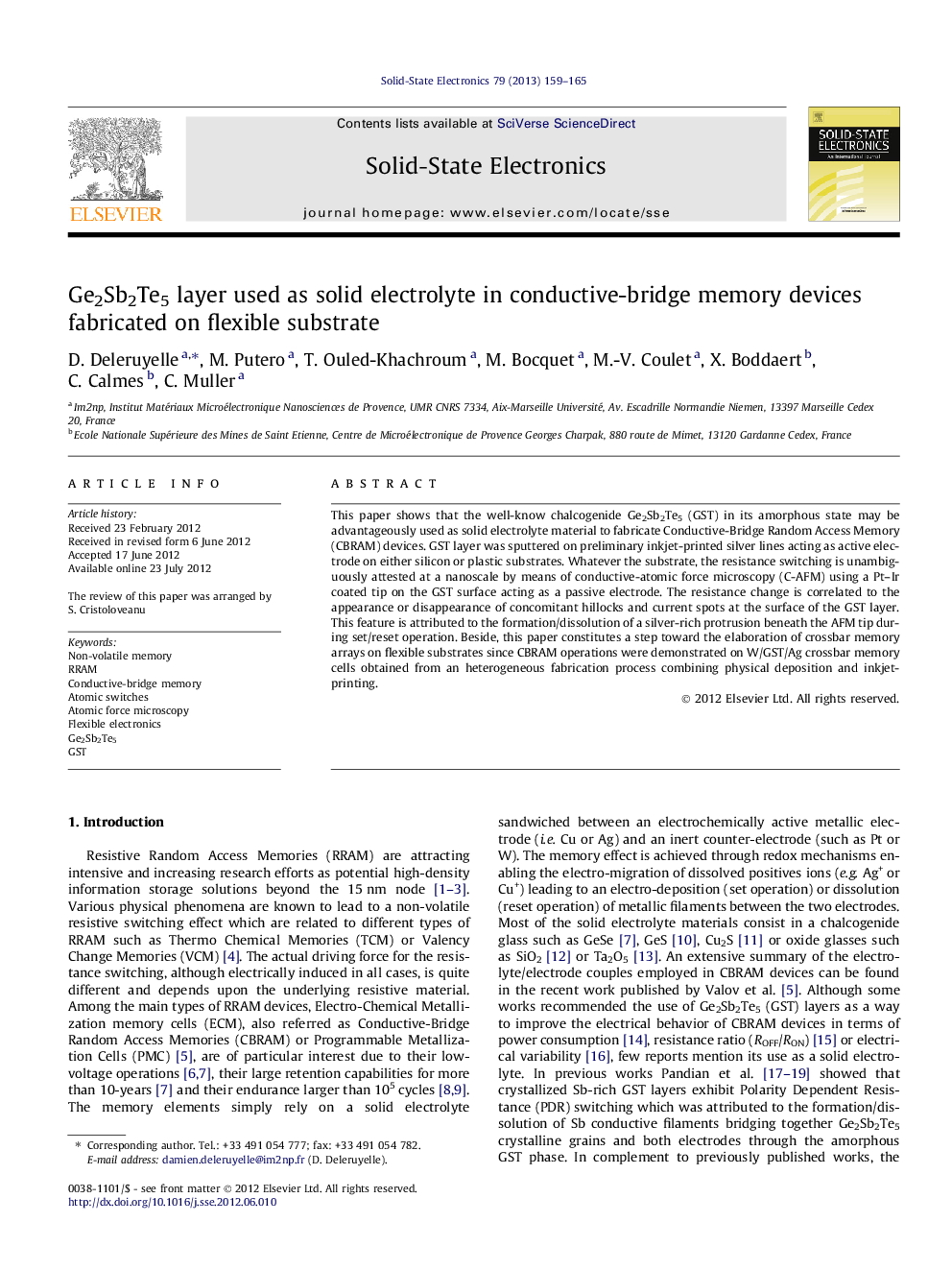| Article ID | Journal | Published Year | Pages | File Type |
|---|---|---|---|---|
| 748451 | Solid-State Electronics | 2013 | 7 Pages |
This paper shows that the well-know chalcogenide Ge2Sb2Te5 (GST) in its amorphous state may be advantageously used as solid electrolyte material to fabricate Conductive-Bridge Random Access Memory (CBRAM) devices. GST layer was sputtered on preliminary inkjet-printed silver lines acting as active electrode on either silicon or plastic substrates. Whatever the substrate, the resistance switching is unambiguously attested at a nanoscale by means of conductive-atomic force microscopy (C-AFM) using a Pt–Ir coated tip on the GST surface acting as a passive electrode. The resistance change is correlated to the appearance or disappearance of concomitant hillocks and current spots at the surface of the GST layer. This feature is attributed to the formation/dissolution of a silver-rich protrusion beneath the AFM tip during set/reset operation. Beside, this paper constitutes a step toward the elaboration of crossbar memory arrays on flexible substrates since CBRAM operations were demonstrated on W/GST/Ag crossbar memory cells obtained from an heterogeneous fabrication process combining physical deposition and inkjet-printing.
► Ge2Sb2Te5 is used as a solid electrolyte for conductive-bridge RAM applications. ► Manipulation of individual conductive-filaments is attested by C-AFM. ► Samples were obtained by combining inkjet printing and sputtering deposition. ► Resistive switching is demonstrated either on silicon or flexible substrates.
